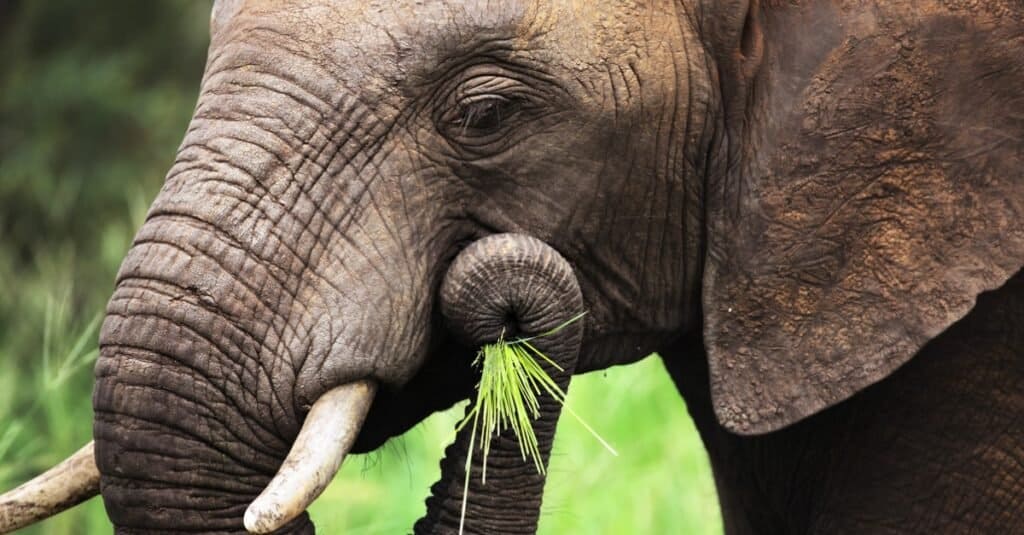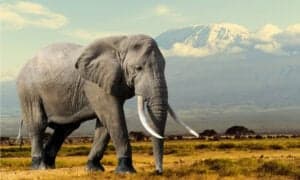Who needs to be tall when you are this strong? The elephant in this clip can’t quite reach the leaves at the top of the tree. So, does it give up? Absolutely not! It uses its huge size and strength to force the tree over. Within a few seconds, the tree is lying on its side, and the vegetation is within reach. Giraffes – watch and learn!
Watch the Amazing Power Now!
How Big Are African Elephants?
African elephants are the Earth’s largest living land mammal. From the tip of their trunk to the tip of their tail, they can reach 29 feet. Savannah elephants can reach 13 feet to the shoulder and weigh over 13,500 pounds. Elephants are very special animals with some distinguishing features. They all have a proboscis (a trunk), large ears, long tusks, columnar legs, and thick skin. Their trunk alone can be over 10 feet long and weigh over 200 pounds. They have a large skull and a short neck that come in useful for knocking down trees!
What Do African Elephants Normally Eat?

African elephants need around five percent of their body weight in food each day.
©iStock.com/johan63
These huge bodies take a lot of food to fuel them. African elephants need to eat between four and six percent of their body weight every day to stay happy and healthy. The food needs to be washed down with between 20 and 50 gallons of water. That said, they can go for several days without drinking when conditions are dry.
As herbivores, elephants have an entirely vegetarian diet. However, they are not fussy about their consumption and can eat at least 80 different plant species. Primarily, these are grasses (including sedges), forbs, shrubs, and trees. Forest elephants eat leaves, seeds, fruits, and bark.
Because their diet is so rich in cellulose, elephants have a specialized digestive system. It has evolved to be able to break down this tough material. Special parts of their intestine, called the colon and caecum, contain protozoans and bacteria that assist with digestion by fermenting the cellulose. Elephants are not the only animals to have this – horses and rhinos have similar intestines. An elephant’s small intestine is also longer than that found in many other animals – it is around 115 feet long. This increases the area for nutrient absorption. Elephants have slow digestion, it can take 12 hours for food to pass through their bodies, and the majority of it (66 percent) passes out in the poop undigested. Elephants produce huge quantities of poop!
The photo featured at the top of this post is © Volodymyr Burdiak/Shutterstock.com
Thank you for reading! Have some feedback for us? Contact the AZ Animals editorial team.






